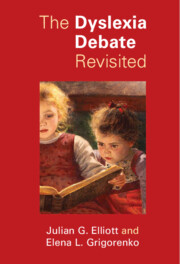Book contents
- The Dyslexia Debate Revisited
- The Dyslexia Debate Revisited
- Copyright page
- Contents
- Figures
- Table
- Foreword
- Preface
- Abbreviations
- Chapter 1 What Is Dyslexia?
- Chapter 2 Explanations at the Cognitive Level
- Chapter 3 The Neurobiological Bases of Reading Disability
- Chapter 4 Assessment, Instruction, and Intervention
- Chapter 5 Dyslexia
- Chapter 6 Conclusions and Recommendations
- References
- Index
Chapter 4 - Assessment, Instruction, and Intervention
Published online by Cambridge University Press: 30 March 2024
- The Dyslexia Debate Revisited
- The Dyslexia Debate Revisited
- Copyright page
- Contents
- Figures
- Table
- Foreword
- Preface
- Abbreviations
- Chapter 1 What Is Dyslexia?
- Chapter 2 Explanations at the Cognitive Level
- Chapter 3 The Neurobiological Bases of Reading Disability
- Chapter 4 Assessment, Instruction, and Intervention
- Chapter 5 Dyslexia
- Chapter 6 Conclusions and Recommendations
- References
- Index
Summary
This chapter is concerned with prevention, assessment, and intervention for reading disability (dyslexia). The initial section is concerned with the reading wars that have fought over the most appropriate way to teach reading. The development of this debate over the past century is outlined and the current focus upon the highly publicized “science of reading” movement is examined and evaluated. The chapter then considers the prevention of reading disability and the nature and role of screening. In so doing, the chapter highlights the complexities of screening for dyslexia when this latter term is used both as a synonym for reading disability and alternatively as a discrete condition that applies only to some struggling readers. The bulk of the chapter is concerned with an examination of “what works” for struggling readers of different ages and levels of difficulty. The often disappointing effects of what are considered to be the most promising interventions are considered. Findings from other, less scientifically grounded, alternative treatments are reported and critiqued. Finally, the lack of any meaningful relationship between a dyslexia diagnosis and differential intervention is examined. It is noted that programs for struggling readers cannot be meaningfully determined on this basis.
Keywords
- Type
- Chapter
- Information
- The Dyslexia Debate Revisited , pp. 183 - 245Publisher: Cambridge University PressPrint publication year: 2024



